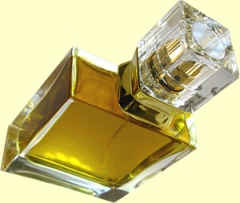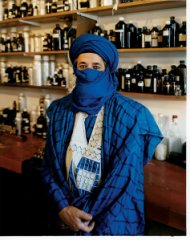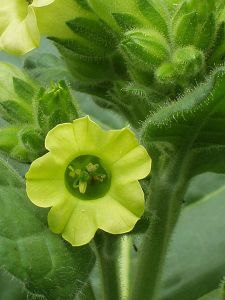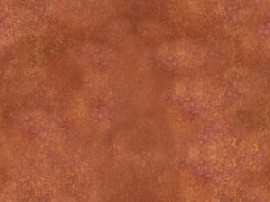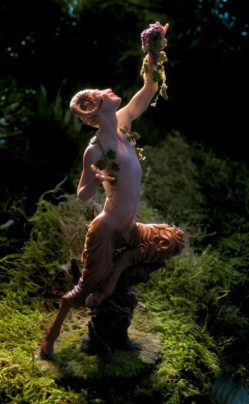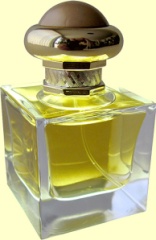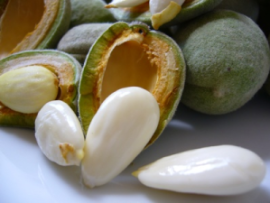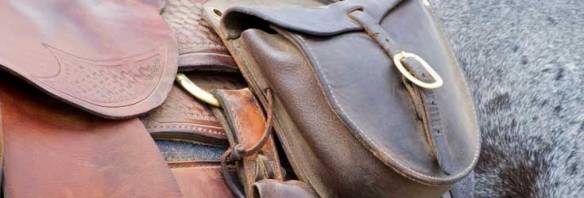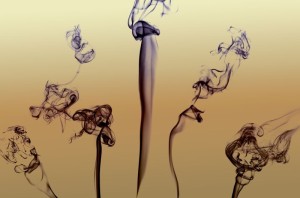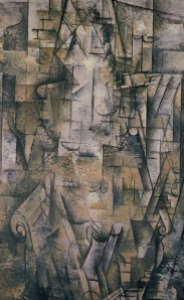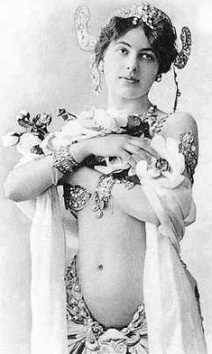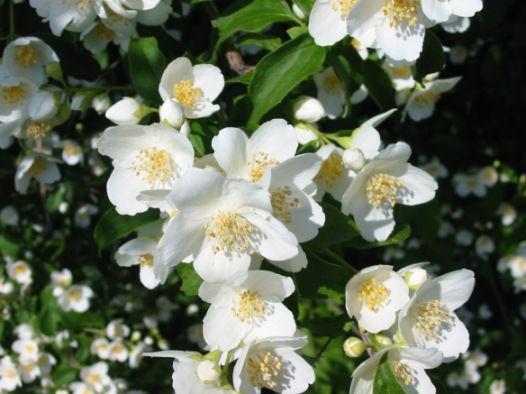Imagine a fragrance that bottles the olfactory trajectory of the tobacco plant from its natural start to its finish, a perfume that evokes images of its greenness rooted in the dark earth of a Virginia plantation where it blooms with flowers, to its brown softness as the leaves are later dried in the sun, to Havana where it is rolled into Cohiba cigars.
That is Tabac, a 3-D display of the note in all its complexity. It traverses the spectrum from floral and green, to tarry rawness and chewy resinous darkness; and then from leathered smokiness to its final manifestation as the most expensive of smooth Cuban cigars that are eventually dusted with cinnamon-tonka and dry amber. It is a remarkably deft treatment of a very concentrated absolute essence, augmented by the smokiest of cedar, but also tamed by the breathiest whisper of dry vanilla and gingerbread warmth. I find it to be brilliantly done, from start to finish.
Tabac is an eau de parfum from the highly respected perfumer, Dominique Dubrana, who also goes by the name “Abdes Salaam Attar.” His Italian perfume house, La Via del Profumo, creates all-natural fragrances. In the case of Tabac, the focus is on tobacco absolute. Abdes Salaam Attar describes Tabac on his Profumo website as follows :
The absolute of tobacco is the theme of this perfume. In the composition the overwhelming aroma of the tobacco is moderated with the spicy and resinous essences traditionally used to scent pipe tobacco…. Vanilla, cistus, tonka etc.
At a bare minimum, the notes seem to be:
Tobacco Absolute, Vanilla, Cistus [Labdanum Amber] and Tonka.
Tabac opens on my skin with floral tobacco, as if the blooming flowers on the plant were captured and bottled with all their fragrant sweetness. It is followed by the rawness of tobacco juice, and by honeyed, sun-dried leaves. Within seconds, the flowers are infused with a camphorated, resinous greenness that is simultaneously grassy and a bit tarry.
The light, bright freshness of the flowers stands in stark contrast to the dark, chewy, gooey treacle that quickly overtakes them. The note is blackened, extremely smoky, tarry, and leathered. Yet, at the same time, there remains a touch of green; it feels as though a rich mass of chewing tobacco and leather had been infused with the brightest of summer grass, along with a touch of aromatic, herbal concentrate. I also detect a strong note of cedar in Tabac, revealing itself as a woody smokiness that is laced throughout all the other elements. It mixes with the hardcore, resinoid aspect of the tobacco absolute to accentuate the leathered undertone running through the fragrance.
Tabac is fascinatingly multi-faceted in its presentation of tobacco. I’ve noticed that if you only dab on a little, perhaps a 1/5th of a vial, the floral and grassy accords emerge more strongly. However, if you apply on 3 really big smears, you’re suddenly presented with significant dark, smoky, and resinous elements.
In all cases, however, Tabac is a very dry take on tobacco, especially as compared to the versions put out by Tom Ford with his Tobacco Vanilla or the even sweeter Tabac Rouge by Phaedon. Mr. Dubrana’s version is unsweetened, substantially smokier, and earthier. It’s as though a heaping dose of the smokiest, dark cedar and an earthy, woody version of something green (vetiver?) were used as accompaniments in lieu of the usual vanilla or sweetened fruits. Yet, for all that, Tabac isn’t bitter or acrid. The sweetness is delicate and subtle, but it is definitely there, even if it is a hesitant whisper in the shadows at this stage. Tabac also differs from Serge Lutens‘ Chergui in a number of ways. Tabac lacks Chergui’s strong touch of powder and honeyed tonalities. It is much more leathered, dry, dense, smoky, and heavy. The main difference, however, is that the tobacco is more multi-faceted, complex, and powerful a note.
Ten minutes in, Tabac starts to change. The smoky, dried tobacco leaves lose their grassy and fresh touches, while that initial pop of floralacy retreats to the sidelines. There, it takes up a ghostly act, sometimes materializing noticeably before flitting away, then reappearing again much later on. As a whole though, Tabac is now a very woody, resinous, chewy tobacco fragrance with serious heft in its notes. I keep thinking of Cuba or humidor rooms with shelves of boxed Monte Cristo or Cohiba cigars. At times, the best part of the scent is the smokiness which verges more on mesquite wood than either incense or actual tobacco smoke. It certainly doesn’t smell like cigarettes or stale ashtrays. What I keep imagining is a wood-burning BBQ at an old plantation in the South, under the shade of cedar trees, while tobacco leaves slowly dry inches away. It’s very Gone with the Wind, with a small detour to Havana.
30 minutes in, Tabac turns softer, warmer, and smoother. The vanilla and tonka stir in the base, indirectly adding a light touch of sweetness. They can’t be singled out individually, but you can definitely feel the impact on the tobacco. The camphorated, green pungency has faded from sight, along with the grassy element. Lingering traces of a leathered accord remain, however, as does the overall smokiness. The dark undercurrent feels less chewy, and most of the blackness has visually turned to a deep brown-gold. The tobacco itself has changed, feeling primarily like semi-sweet, dried leaves, though there is still a subtle wetness and tinge of rawness left behind. The sillage also changes, dropping from its initial forcefulness to a soft cloud that wafts about 2 inches above the skin. Nonetheless, Tabac is still very potent and strong when sniffed up close, and it remains that way for a couple of hours.
Almost all the tobacco fragrances that I’ve tried seem to manifest pipe tobacco with its fruited, sweetened tonalities. They also toss in vanilla — whether powdered, resinous, or both. Profumo’s Tabac is very different. To me, this is pure cigar tobacco. A dry, unsmoked cigar, but also one with very smoky and woody nuances. There are no fruits, barely a drop of sweetness, and what amber there is isn’t a molten thickness.
At best, the fragrance is nestled in a tinge of golden softness and warmth, but nothing about it translates as real, hardcore amber to my nose. In fact, for the longest time, there was none of the nuttied, caramel, toffee elements of labdanum amber that forms the core of such fragrances as Dior‘s Mitzah, nor the ambergris amber in Dior’s Ambre Nuit or Profumum Roma‘s Ambra Aurea. The golden warmth here is much more abstract in nature, and wholly infused with mesquite smokiness and dryness rather than with heavy, thick sweetness. I love Tabac’s pure authenticity, and find it to be a novel change from the traditional tobacco scents on the market. This is the plant in all its manifestations, from the initial greenness and flowers of its natural state, to the cigar at the end of the line.
Shortly before the end of the 2nd hour, Tabac changes once again. Now, the tonka bursts onto the scene, dusting everything with cinnamon. The labdanum finally perks up, adding a faintly burnt caramel, nuttied undertone to the proceedings, but it’s incredibly muted, sheer, and thin. Most of the time, it’s hard to single out, as Tabac is superbly blended. What happens instead is that it works from the sidelines to impact the other notes, and the overall cocoon in which the tobacco lies. It still doesn’t change Tabac’s dryness, however, which continues in large part thanks in part to the cedar’s smokiness.
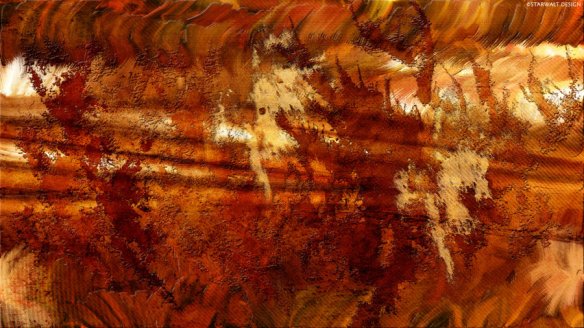
“Copper abstract” by StarwaltDesign via deviantart.com. http://starwaltdesign.deviantart.com/art/Copper-Abstract-207268167
A strange thing slowly happens. Tabac takes on almost a mocha-cocoa quality. Some combination of the bitter tobacco, the toffee’d labdanum amber, and the tonka has melded into an accord that smells like bitter coffee, dusty cocoa powder, vanilla, and cinnamon. The overall effect is to create a mocha tobacco impression on my skin that I love. I initially thought I was imagining it, but there was the same nuance that popped up both times that I tested Tabac. It’s obviously a question of skin chemistry, but it’s a super outcome in conjunction with the lingering traces of darkened leather and wooded smokiness. The leather undertone — muted and mild as it now is — is particularly great in tying everything together like a cord.
Tabac continues to soften, and its sillage drops further. For the first two hours, Tabac hovered about 3 inches above the skin, then it drops to a mere inch at the start of the third hour. By the 4.5 hour mark, it is a skin scent that is primarily cinnamon-dusted, tonka tobacco with traces of chocolate mocha, leathered darkness, and cedar smoke, all nestled in the quietest cocoon of dry amber. Tabac turns more and more abstract, spending the next 5 hours as a blur of vanilla-dusted tobacco leaves with amber and the lightest, tiniest speckle of powder. To my surprise, it’s still not hard to detect if you put your nose on your skin. In its final moments, Tabac is merely cinnamon sweetness and dryness. All in all, Tabac lasted 12.75 hours on my skin, with moderate sillage for the first third of its life, then discreet sillage.
On Basenotes, the consensus over Tabac is overwhelmingly positive. Out of 12 reviews, 10 are positive, 1 is neutral, and only 1 is negative. The most interesting thing concerning the last two is that those people seem to significantly disagree as to whether Tabac actually smells like tobacco. So, let’s start with the neutral and negative reviews first:
- [Neutral:] cedar verging on turpentine.
- [Negative:] I’m a huge fan of tobacco scents (a “reformed” smoker), but I get absolutely no tobacco from this one… not even a hint. What I do get is “grass”; not new-mown grass, not “pot”, but a strong, soothing, grassy smell. Which I like. I’d like it much more, if it wasn’t astronomically expensive. But no tobacco.
Well, skin chemistry is a funny thing, and his skin obviously brought out all the greenness of the scent. Another commentator also found that Tabac had no tobacco but he, in contrast, gave the fragrance a thumbs-up, writing: “Definitely NOT Tobacco, but….. a great perfume!”
Others, though, got a full dose of the note, with several posters proclaiming that Tabac is a “must try” for any serious tobacco lover. The analysis of one commentator, “Hirch_Duckfinder,” is superb:
Starts with a slightly boozy blast of tobacco, like an islay malt, smokey and resinous with echoes of hay. For a short while the tobacco remains centre and top until it settles down and it drops into a strong structure with the warm tobacco at the low register, some lovely fluid labdanum, sweet tonka and beautiful vanilla sitting in layers. There is clary sage too, seamlessly integrated as flavouring. The drydown is absolutely my favourite tobacco accord of all time. The balance is wonderful, the tobacco is present but not too sharp or musty, not sour and thin or thick and overwhelming but with body and lightness at the same time. The other notes are carefully built around to pull out aspects of its complex smell.
This has instantly become my favourite tobacco scent and one of my favourite perfumes of all. If you like tobacco at all, you must try this.
While the opening is quite masculine, I think the drydown is very wearable by a woman who likes tobacco.
I am not sure if it is the natural materials, the composition or both, but there is something in these profumo perfumes which gives me the impression of 3D, its almost like I can see the layers of the structure, distinct but in balance and with clear air between them.
Two more reviews are useful in providing comparisons to other tobacco fragrances on the market. First, “The Good Life” who writes:
I can’t add much to hirch’s lucid desciption. It is indeed a wonderful, must-try fragance. I, too, appreciate the absence of honey-dripping sweetness, as in SMN’s Acqua di Cuba, Boellis Panama and many other tobaccos and anyone who finds the musty density of [Creed‘s] vintage Tabarôme overly stifling will find here a clearer, more accentuated and tobacco-focused scent. That said, it is by no means simple – Dubrana has pointed out that this is in fact his most complex fragance in which he employs ingredients themselves constructed from many individual oils. Yet it is supremely elegant and easy to wear and even quite long lasting for a natural perfume. [Emphasis and bolding to names added by me.]
“WillC” adds a comparison to Miller Harris‘ Feuilles de Tabac, and also brings up Luca Turin:
A deliciously comfortable masculine” (cf. Luca Turin) is a brilliant encapsulation of this fantastic fragrance. You might look at this description in the following way: “deliciously” referring to the slightly gourmandish aspects of the fragrance – most obviously gingerbread-like (as with Feuilles de Tabac – which Tabac, in my view, comfortably outclasses), although sometimes I seem to catch a faint whiff of something a bit like cocoa in the top notes. “Comfortable” – sometimes it reminds me of putting on a favourite old jumper (Tabac works well in winter, I’ve yet to try it in warmer weather), and there is definitely a strongly comforting aspect to the fragrance (perhaps this is partly because I used to be a smoker), although Tabac wouldn’t be at all out of place at a black-tie event. “Masculine” – I would say the fragrance is most obviously masculine, though I think a daring woman could pull it off.
There is a kind of sense of depth and density the fragrance has to it – this is perhaps due to the complex blending of a large number of natural ingredients – which I find very appealing. [¶] All in all, one my personal favourites from the La Via del Profumo line, and, I think, a definite must-sample for anyone looking for a truly high-quality tobacco fragrance. [Emphasis to names added by me.]
As for Luca Turin, yes, he does indeed love Tabac, which is one of three Profumo scents to which he awarded Four Stars. In fact, Profumo is supposedly the only all-natural perfume house that he includes in his book, Perfumes: the A-Z Guide. There, he calls Tabac a “tobacco leaf” fragrance, and writes:
Some years back I lived for a time in [Durham] North Carolina… home to half a dozen tobacco companies, including Lucky Strike. On some days, the downtown streets smelled so wonderfully of tobacco that the whole place felt like it had been carved out of a giant gingerbread. Tabac approximates that beautifully, without being overly sweet or honeyed. A deliciously comfortable fragrance.
I agree that Tabac is a comfortable fragrance, but I find it much more than that. I think it’s damn sexy. It conjures up the masculinity of the hottest, most rugged man on earth with a seriously gravelly, stubbly cheek that you could light a match against. (Those of you who know me well know of my massive obsession with …. er… interest in Jim Caveziel and “Mr. Reese” in the television show, Person of Interest. And, yes, I’m imagining smelling this on “Mr. Reese.”) Yet, the softness and spiced coziness makes Tabac something that would be fascinating on a confident, strong woman, creating an utterly alluring set of contradictions between Hemingway’s unlit Cohiba and the softly feminine tonka bean, the honeyed touch, and the gingerbread. If you’re a woman who loves tobacco scents or whose skin amplifies sweetness, then I don’t think you’ll find Tabac to be very “masculine.”
I know I’m quoting a lot of people but I want to give you the fullest picture possible, which is why I have to toss in perhaps one of the most visually descriptive takes on Tabac. It comes from Portia of Australian Perfume Junkies, who has a terrific photo to convey what she experienced:
It opens up deliciously vanilla and murky green tobacco on my skin, deep and humus rich earthy, maybe the cistus (rock rose) flies above but to me there is a fruity/jammy quality to the higher notes so you have a 2 speed fragrance. The depth and steady boom of the vanilla/tonka/smoking tobacco are played against this light flower/green tobacco/hay/fruity accord, there may even be a boozy side story here just on the edge of smelling. It is quite a ride, you can almost feel the sun on the cut grass, warming and drying it. This is a perfume, hefty, tasty, lusty and delicious; not for the faint hearted or affeared of fragrance. There is no hint of light aquatic, fruity nothing here. As it begins to lose its potency and aims towards dry down Tabac becomes sweeter before it goes dark, like the vanilla has come back to round the whole story out. Scent, longevity and sillage; Tabac by La Via del Profumo seems to have it all for me. When I finish this nearly empty sample it will be FB time.
I’m with Portia because, in case you hadn’t gathered by now, I thoroughly enjoyed Tabac and want a bottle for myself. It hits my sweet spot of a “comfort fragrance,” but it’s also so much more than that. Tabac’s grassiness, tarry leather, woody smokiness, soft cinnamon tonka, and mysterious floral element make it a 3D hologram of a tobacco plant. For me, the sum-total effect is very original, complex, sexy, and sophisticated. It’s also such a damn relief not to have a tobacco fragrance dripping with gooey syrup, powder, or oud!
Yes, I admit, the sillage isn’t monumental. No-one will ever compare a Profumo scent to a Tom Ford powerhouse. That said, I thought Tabac tied with Milano Caffé as being the strongest of the line that I’ve tested thus far. (Plus, Mr. Dubrana suggests spraying a fragrance on one’s hair and clothing to increase longevity and power.) At least it is something you don’t have to fear wearing to the office. As an added bonus, Tabac is moderately priced at $50 for the smallest bottle, a little goes a long way, and samples aren’t difficult to obtain, either.
Tabac is the last of my Profumo reviews, and I think it is a great way to close out this mini-marathon. It joins the expresso-patchouli-vetiver fragrance, Milano Caffé, and the “death by jasmine” Tawaf as my personal favorites from the line. I think that many other tobacco lovers will also enjoy Tabac. That includes women, too, so long as they like dry, unsweetened, and/or semi-masculine fragrances. Tabac’s gingerbread, cinnamon, tonka drydown feels as unisex as you can get, so perhaps it’s merely a question of getting past the more overtly masculine opening. Give it 15-30 minutes, and you will see that the raw edges start to soften. Give it 90 minutes, and you’ll see the beginnings of the delicious drydown. In short, whatever your gender, if you’re looking for a pure tobacco scent with leather, smoked woodiness, and softly spiced amber, then Tabac should definitely be on your list of things to try.
Disclosure: My sample was courtesy of AbdesSalaam Attar. That did not impact this review. I do not do paid reviews, my views are my own, and my first obligation is honesty to my readers.

